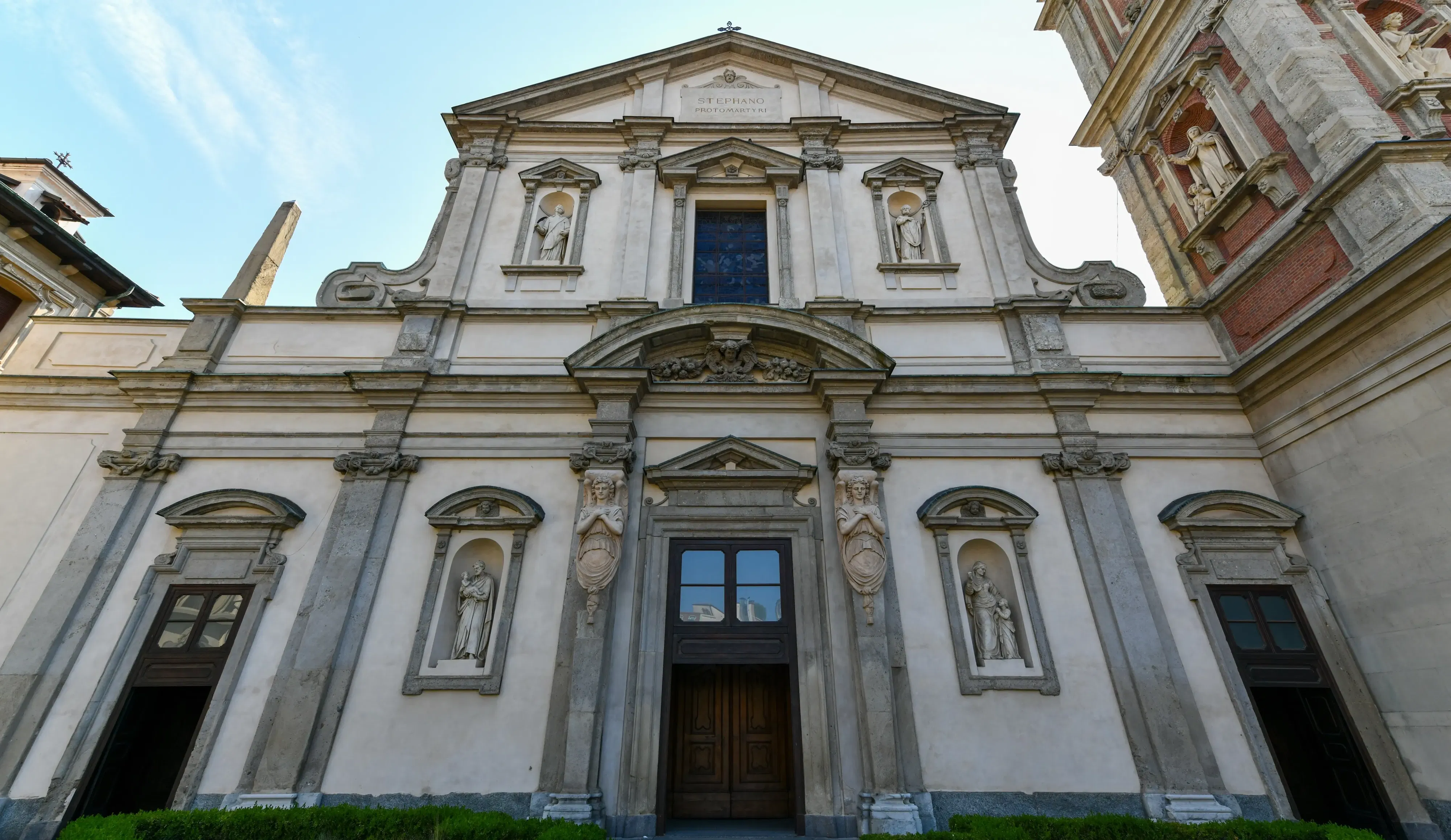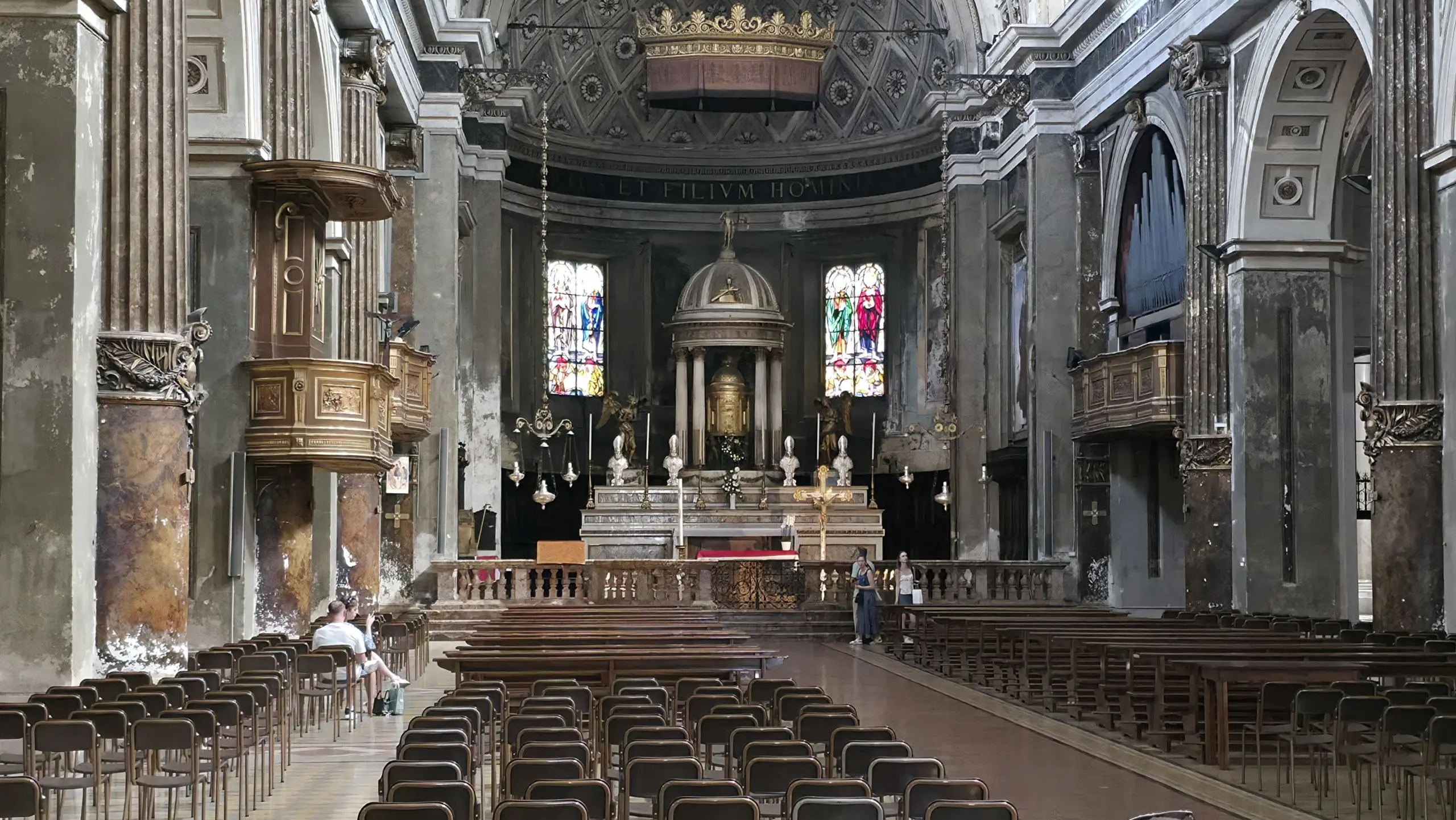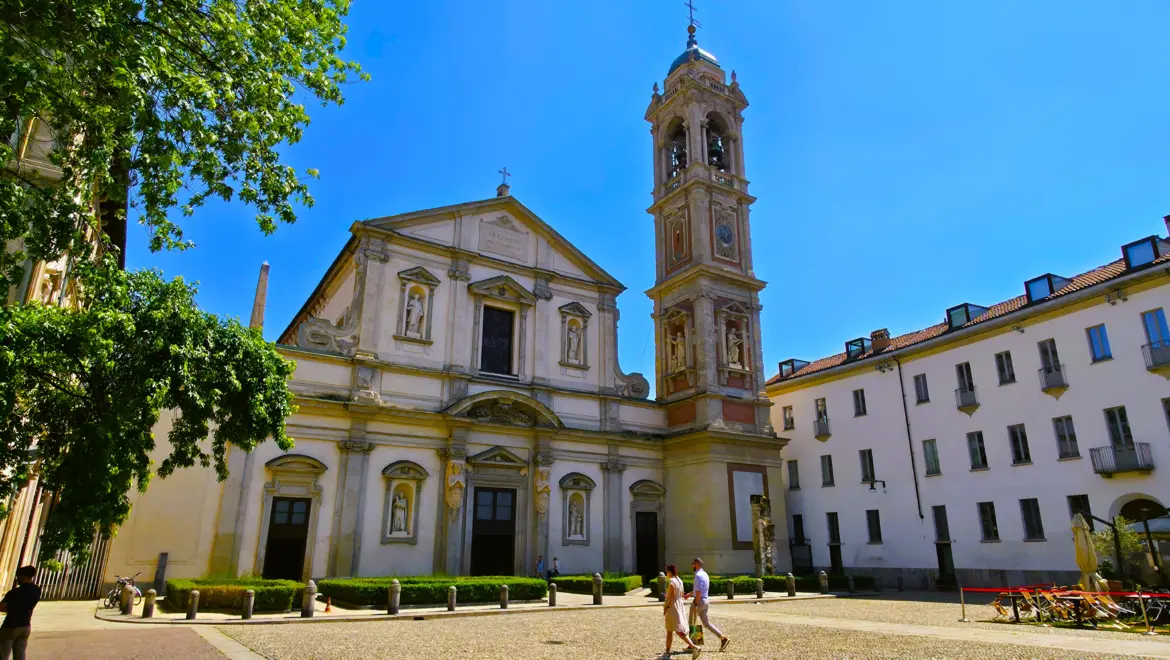Ciao fellow adventurers! 🌟 Milan dazzles with fashion, canals, and Gothic grandeur, but just a few steps from the Duomo, I found a church that took me deep into the city’s spiritual and historical roots: the Basilica di Santo Stefano Maggiore. This basilica doesn’t have the soaring spires of the Duomo or the Instagram fame of Santa Maria delle Grazie, but it carries something just as powerful: 1,500 years of history, devotion, and transformation. Known as the Basilica of the Martyrs, Santo Stefano is one of Milan’s oldest and most important sacred spaces. Walking inside felt like stepping back through layers of time.
The Origins of Santo Stefano Maggiore
The story of Santo Stefano reaches back to the 5th century, when Bishop Martinianus founded the first basilica here in 417 AD. This area had long been significant in Milan’s urban landscape, becoming one of the city’s important early Christian sites. In other words, Santo Stefano quite literally rose out of a landscape of memory and devotion.
The early church became one of Milan’s most important places of worship, but disaster struck in 1070, when a fire destroyed much of the structure. Out of those ashes came a new Romanesque Basilica in 1075, larger and more resilient, reflecting the city’s determination to preserve its sacred heritage.

Over the centuries, Santo Stefano evolved yet again: Gothic chapels were added in the late Middle Ages, Renaissance frescoes and altars enriched the interiors, and Baroque touches gave the basilica new layers of color and drama. Today, stepping inside means experiencing 1,500 years of faith and history, from its 5th-century foundations to its medieval rebuilds and Baroque transformations.
Inside the Basilica
Walking into Santo Stefano, you won’t find gilded ceilings or endless crowds, but instead an austere beauty that speaks softly but powerfully.
- The nave, supported by massive Romanesque columns, feels solemn and timeless.
- Side chapels hold Renaissance and Baroque frescoes, each adding color and devotion to the otherwise simple interior.
- A sense of space and quiet invites reflection, it’s a church that encourages you to pause, breathe, and feel the centuries that have passed within its walls.
While less extravagant than the Duomo, I found it more intimate, almost like Milan’s spiritual heartbeat, preserved across generations.

Connection to San Bernardino alle Ossa
One of the most fascinating aspects of Santo Stefano is its direct link to the San Bernardino alle Ossa ossuary chapel. The ossuary was built in the 13th century when the adjacent cemetery filled to capacity, and it remains connected to the basilica today. Visiting both spaces together is a powerful experience. In Santo Stefano, you feel the solemnity of early Christian devotion; in San Bernardino, you confront mortality in the stark beauty of bones arranged as art. Together, they offer a profound journey into Milan’s faith, history, and relationship with life and death.

My Personal Reflections
When I entered Santo Stefano, I wasn’t sure what to expect. After the dramatic presence of the Duomo and the romantic energy of Brera, this basilica felt quieter, humbler. But as I walked through, I realized that its power lies in exactly that, it isn’t trying to impress with grandeur, but with depth.
The thought that Christians prayed here 1,500 years ago, on ground that was already sacred in Roman times, gave me chills. The simplicity of the space, paired with its layers of history, made me feel more connected to Milan than many of its more famous landmarks. Santo Stefano reminded me that travel is about discovering not just what dazzles the eye, but what touches the soul.
Tips for Visiting Santo Stefano Maggiore
- Location: Piazza Santo Stefano, just a 5-minute walk from the Duomo.
- Admission: Free, though donations are appreciated.
- Best Time to Visit: Morning or early afternoon, when it’s quieter. Perfect to pair with San Bernardino alle Ossa next door.
- Photography: Respectful photography is usually allowed but avoid during services.
- Combine With: The Duomo, University of Milan (a short walk away), or a stroll toward Porta Venezia.

Final Thoughts
The Basilica di Santo Stefano Maggiore may not shine with Gothic spires or Renaissance fame, but its strength lies in its roots. This ancient basilica carries the weight of centuries: Roman origins, medieval resilience, Renaissance art, and Baroque devotion, all layered into one deeply meaningful space.
For me, Santo Stefano was a reminder that sometimes the most powerful places aren’t the most famous. They’re the ones where you can stand in silence, imagine the generations before you, and feel part of something enduring.
If you’re visiting Milan, take a few minutes to step off the main tourist trail and into Santo Stefano. It may not be the city’s loudest landmark, but it’s one of its most unforgettable.
xoxo,
Bubbly 🎈

